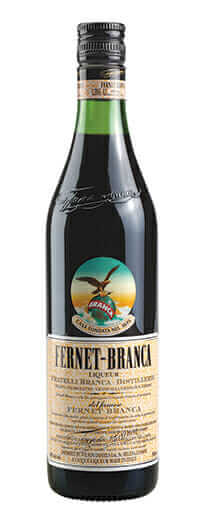All about this bitter, barely-drinkable booze.

Amaro is just one of a large family of herb-infused liqueurs. They’re basically bitters, but sweetened just enough to be (barely) drinkable. Their bitterness jumpstarts the body’s natural detoxifying response, producing more saliva and getting gastric juices flowing – all of which helps digestion. The drink’s earliest makers believed that the stronger the flavor, the stronger the healing power. Amaro is inherently local, flavored with regional plants, roots and flowers.
Amaro Sibilla, from Muccia, is sweetened with wild mountain honey. Amaro Braulio, from Bormio, in the mountainous Valtellina valley, uses alpine herbs and flowers. Amaro Averna is distilled with Sicilian citrus.
“Italy has a lot of different micro-climates, and the different amari reflect those climates and what grows there,” says Lance Winters, master distiller at St. George Spirits, a craft distillery in California known for using locally harvested herbs.
Milan’s Fernet Branca is among the best-known amari in the U.S., thanks to a cultlike popularity in San Francisco that has spread to the rest of the country. The exact mixture of its 40-some herbs and spices is top secret, but it snaps with quinine’s bitter bite and menthol’s bracing chill.
Originally imported to the U.S. as medicine during Prohibition, the drink grew so popular that a Fernet factory operated briefly in New York City. The drink has insider status among bartenders.
“When non-industry folks ordered shots of JÁ¤germeister, bartenders and servers would up the ante with Fernet,” says Greg Lindgren, owner of San Francisco bar Rye, which serves a selection of hard-to-find amari.
All amari are slightly sweet, so while some might pass on a straight sip, they work well in cocktails. The classic Hanky Panky mixes gin, sweet vermouth and a dash of Fernet. Lindgren’s Dogpatch cocktail combines rye, vermouth, orange bitters and citrussy Sicilian Averna.
Despite enjoying a renaissance among craft-cocktail enthusiasts, amaro isn’t nearly as popular in the U.S. as it is abroad.
But the ease with which the liqueur can be produced might change that. Homemade amaro can be made by simply infusing a neutral spirit with herbs and sweetening to taste. And so stateside amari are entering the market: There’s minty Highland Amaro from Colorado’s Leopold Brothers, and Grand Poppy from Los Angeles’ Greenbar Distillery, flavored with the state flower, the California Poppy. Chicago’s Letherbee distillery makes a saffron-heavy amaro; Pennsylvania’s Root was inspired by Colonial American medicinal root beers; Washington’s BroVo Spirits partners with bartenders to develop bespoke amari for specific cocktails.
Winters is currently working on a California amaro to complement his roster of alcohols made with local ingredients. He’s keeping the exact recipe close to his chest, but reveals that it contains a thistle invasive to Marin County. Visit his distillery and he might offer a taste. Sip proudly and grimace with grace.
William Bostwick is the author of The Brewer’s Tale: A History of the World According to Beer.
